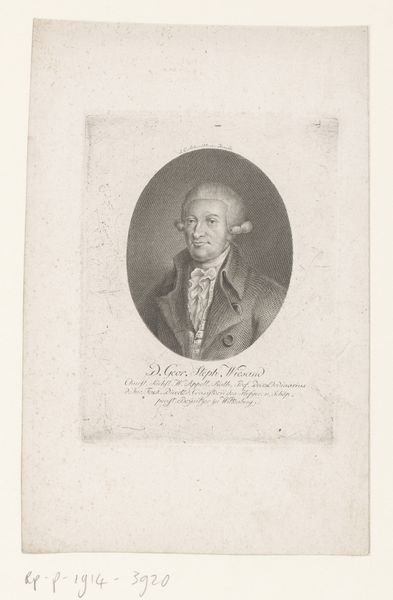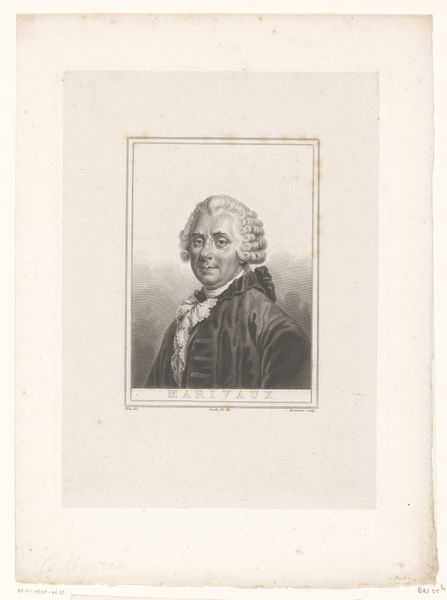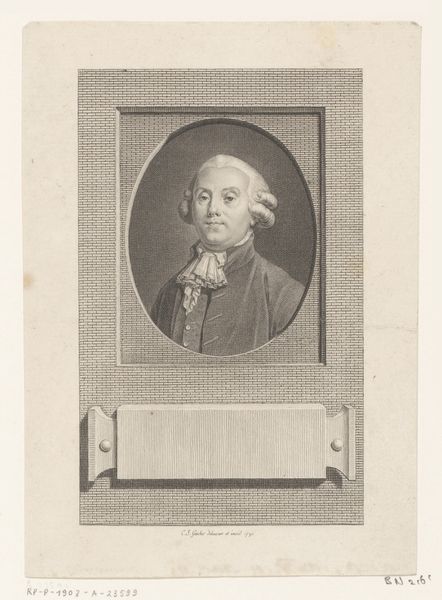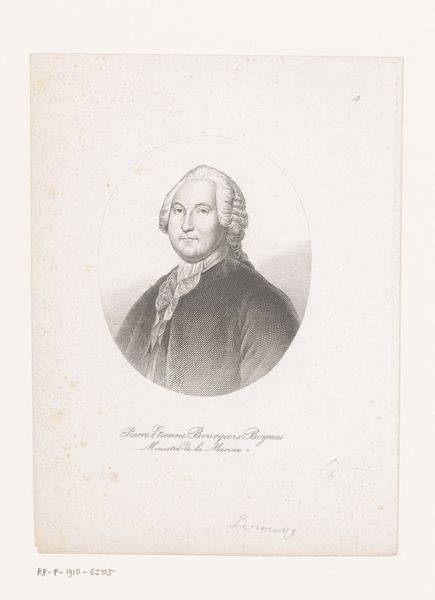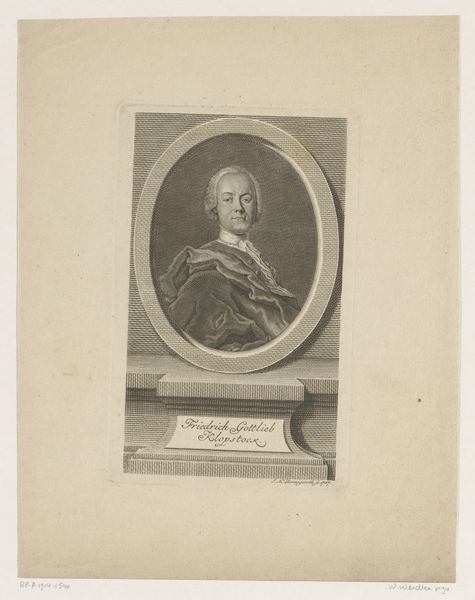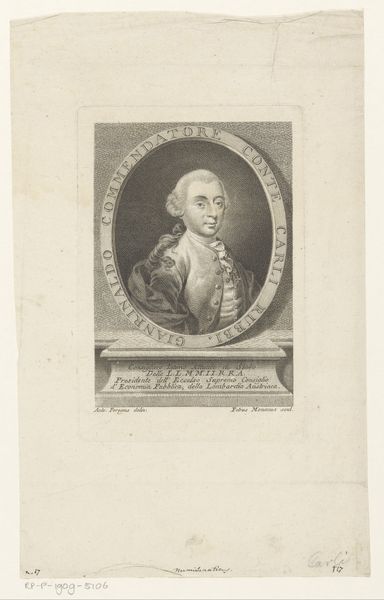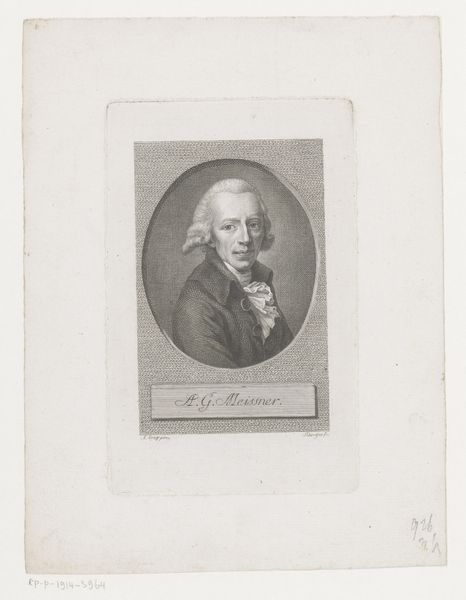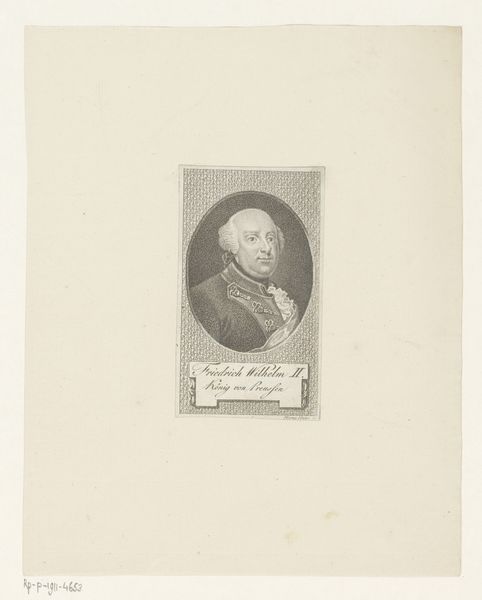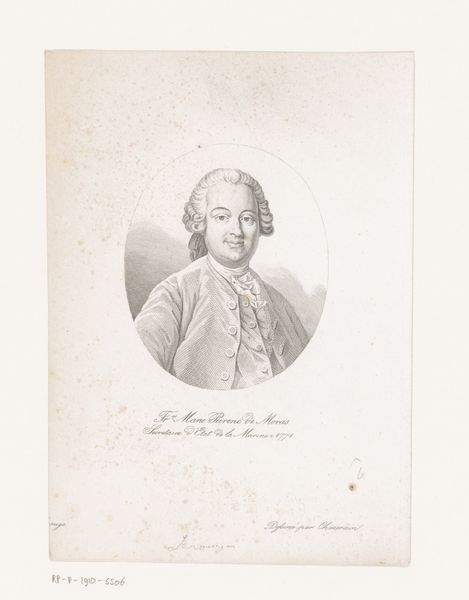
print, pencil
#
portrait
#
pencil drawn
#
neoclacissism
# print
#
pencil sketch
#
pencil drawing
#
pencil
#
pencil work
#
history-painting
Dimensions: height 165 mm, width 120 mm
Copyright: Rijks Museum: Open Domain
Editor: So, this is a print – a portrait of Georges-Louis Leclerc, graaf de Buffon, made with pencil sometime between 1822 and 1863 by Lazarus Gottlieb Sichling. It's very detailed, but also somehow feels distant. How do you interpret this work, thinking about the material process? Curator: I find it compelling to consider this work through the lens of its production. The transition from a drawing to a print allows for the reproduction and broader distribution of the image. Think about it: a drawing possesses a unique aura because of its direct contact with the artist’s hand, but printmaking fundamentally shifts that. How does the transformation of the pencil sketch into a printed image change the relationship with the viewer, or the artwork itself as a commodity? Editor: That’s fascinating. I hadn’t thought about the printmaking aspect so directly. It creates distance, but also makes it more accessible, doesn’t it? What would have motivated Sichling to create this as a print instead of just a drawing? Curator: Precisely! Consider the social and economic implications. Prints allowed for a wider dissemination of knowledge and imagery, contributing to the growth of a visual culture. The subject, Buffon, a prominent naturalist, was himself engaged in disseminating knowledge through his writings. Is there a parallel to be drawn between the means of production of Sichling's portrait and Buffon's own projects? Editor: That makes so much sense! It's like the method of production reflects the subject's own work. Thanks for clarifying; I have a new appreciation for the piece now. Curator: Indeed. By focusing on the material conditions of art-making, we reveal the interwoven nature of art, society, and knowledge production. I, too, find that reflection quite satisfying.
Comments
No comments
Be the first to comment and join the conversation on the ultimate creative platform.
